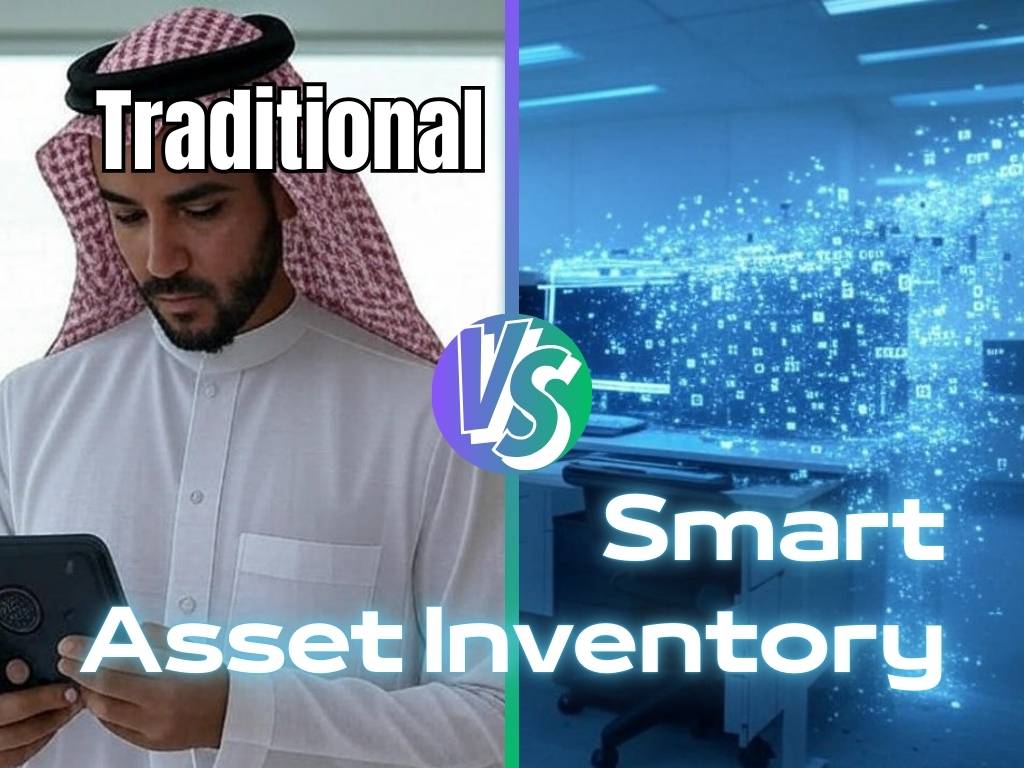Fixed Assets are considered to be a company’s largest investment, which demands a structured and well-planned form of management and monitoring. Indeed, large businesses pay a great deal of attention to these fixed assets as they are the base of their production process. There are three ways to conduct the fixed assets inventory and today I’m going to differentiate between the three methods.
Fixed Asset Inventory: Methods and Importance
To begin with, the fixed assets inventory process is a crucial process that affects the whole company due to the fact that these fixed assets are used on the long term to generate profits. Typically, fixed assets have a finite lifetime after which they should be discarded. With time and use, the value of fixed assets decreases where it’s up to accountants to record the depreciation in order to know when they should be replaced.
So, what are the different ways of fixed assets inventory?
The Challenges of Physical Fixed Asset Inventory
First, we have the physical fixed assets inventory. By definition, a physical fixed assets inventory is the actual sighting, counting and recording of fixed assets that a company possesses. Indeed, fixed assets inventory, in huge companies, requires an extensive amount of time to conduct, not to mention the high possibility of errors during the process after all, to err is human. Furthermore, it’s really hard to dig a piece of information through humongous amounts of documents which is again time-consuming. With a physical fixed assets inventory, the names of the fixed assets can be confused as well, as there could be more than one black chair for example, so it gets really hard to distinguish one asset from the other consequently leading to errors that eventually affects the bottom line.
Another way of fixed assets inventory is using barcodes. Sage, a well-known company, utilizes barcodes in their systems to track and manage fixed assets. Once again, barcodes fail to the test of durability and versatility. Even though, Sage, the huge company sells business solution to a wide variety of customers in many industries, still they have fallen in the pit of what so called “Barcode”. Though, businesses have been using barcodes for quite a long time to manage and track their fixed assets, they still have many drawbacks that companies cannot be overcome.
Barcodes are labels that are printed on papers i.e. they are easily damaged, torn and worn out. Once that happens, it gets impossible to scan the tag and get the information out of it. By information, I mean the fixed asset’s name or ID (and the price in case it’s a product to be sold) and that’s all it could do. Barcodes cannot be attached onto small or metal fixed assets and they are unappealing. The first thing you do when you buy something is take off the barcode off of it. Get my point?
Barcodes are also time-consuming as each fixed asset has to be scanned separately and at a very close distance. So again, it’s just a semi-automated process that resembles to a great extent the manual and physical fixed assets inventory and is as burdensome.
Finally, the third way of fixed assets inventory is using an RFID tag. RFID has proved itself as a game-changer in the business world, smashing away all the other systems that cross the way especially when it comes to tracking and managing fixed assets. RFID tags are versatile, they come in all shapes and sizes and can be attached into all sorts of fixed assets from the largest fixed asset to the tiniest where they can be tagged with what so called a dust RFID tag. It is very appealing as it barely appears on fixed assets and doesn’t distort the way the fixed assets are presented. Furthermore, RFID tags are durable as they endure extremely high temperature, humid, water and any other harsh environmental conditions.
RFID: The Game-Changer for Fixed Asset Inventory
When using RFID, the time required to conduct the fixed assets inventory is reduced by 87.5% which means that what used to take a day to be done, takes merely 3 hours with the use of the RFID technology. But, the most appealing thing about the RFID system in fixed assets inventory is how accurate it is. Each tag bears a wide range of information from the assets’ ID, the manufacturer, the maintenance schedule, the date of acquisition, to the depreciation information. So there’s no chance in mixing up two fixed assets & confusing their information. RFID, thus, grants the utmost accuracy.
A reliable fixed assets inventory system must accurately and rapidly calculate the depreciation of each fixed asset. It should also track maintenance schedules of fixed assets in order to perform necessary repairs, to extend its useful life. Moreover, it should monitor when fixed assets are being checked-in and out and by whom in order not to lose control over it and avoid unnecessary payments by duplicating purchases (lost, stolen, broken, misplaced fixed assets).
Many organizations overlook the importance of a sound fixed assets inventory management system when they really shouldn’t. It’s rather crucial for companies to properly track and manage fixed assets in order to avoid wasting both time and money, and negatively impacting the company’s bottom line.
As you can see, there are many ways to conduct the fixed assets inventory process. To me, the best is using an RFID technology. RFID technology improves the fixed assets inventory process as it distinguishes each and every fixed asset by a tag that bears a unique identification code which cannot be replicated under any circumstances. This tag will help in keeping track of the fixed assets and will drastically enhance the overall process by reducing conducting time and granting a very high levels of accuracy.
Here’s a table of the differences between all three methods of fixed assets inventory:
| Difference | Physical Inventory | Barcode | RFID |
| Speed | Several days | Several days | 3 hours |
| Durability | — | Short lived (doesn’t withstand high temperature, humidity..) | Durable (withstands harsh environmental conditions) |
| Cost | Costly: the need of additional employees to perform the count | Affordable | Slightly expensive |
| Accuracy | Inaccurate | Inaccurate | Extremely accurate |
| Appearance | — | Unappealing | Appealing |
| Memory Capacity | — | Bears only the ID, name and the price of an item | Bears all sorts of information: ID, manufacturers’ name, acquisition’s date, maintenance and depreciation information etc… |
| Versatility | — | Not versatile: cannot be placed on small items, or metal items or liquids.. | Versatile: can be placed on all sizes and shapes of items (dust tags) |
| Read Range | — | A couple of centimeters (requires a direct line of sight) | Up to 10-12 meters (doesn’t require a line of sight and can read concealed tags as well). |
| Storage | — | No storage capabilities | Strong storage capabilities |
Streamline Fixed Asset Management and Boost Profits with Intelligent Inventory Solutions
In essence, integrating a fixed assets inventory management solution to conduct the inventory is crucial. A reliable fixed asset inventory management system will inevitably increase income, cash flow and return on investment and that’s by reducing over-payments and maintenance costs, reducing time and theft, eliminating depreciation calculation errors, and obviating the need to re-purchase fixed assets all over again. The appropriate solution will enable companies to efficiently track and manage fixed assets and actually supply them with structured and detailed reports. Implementing the best solution in the market will definitely push the company towards the ultimate success.
For more information about Tragging’s fixed assets please visit us at: www.trackingfixedassets.com




